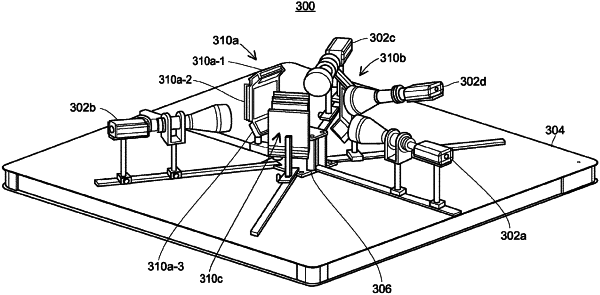| CPC G06T 17/20 (2013.01) [G01N 15/0227 (2013.01); G01N 15/06 (2013.01); G06T 7/20 (2013.01); G06T 15/06 (2013.01); G06V 10/763 (2022.01); H04N 5/06 (2013.01); G01N 2015/0693 (2013.01); G06T 2200/08 (2013.01); G06T 2207/30242 (2013.01)] | 28 Claims |

|
1. A method for three-dimensional (3D) imaging of a sample in a vessel having a longitudinal axis orthogonal to a horizontal plane, the method comprising:
capturing, by at least three cameras located at different positions around the vessel, at least three respective two-dimensional (2D) images of the sample in the vessel, wherein
each of the at least three 2D images comprises pixels having associated pixel values,
each of the least three cameras has a respective optical axis,
the optical axis of a first camera of the at least three cameras is inclined or declined at a first angle relative to the horizontal plane, the first angle being greater than or equal to zero degrees, and
the optical axis of a second camera of the at least three cameras is inclined or declined at a second angle relative to the horizontal plane, the second angle being at least five degrees greater than the first angle; and
generating, by one or more processors, a 3D image of the sample based on (i) the pixel values associated with the pixels of the at least three 2D images, and (ii) one or more look-up tables collectively indicating, for pixels in each of the at least three 2D images, expected paths for light traversing the vessel and the sample.
|